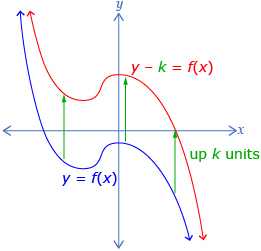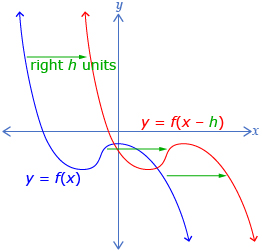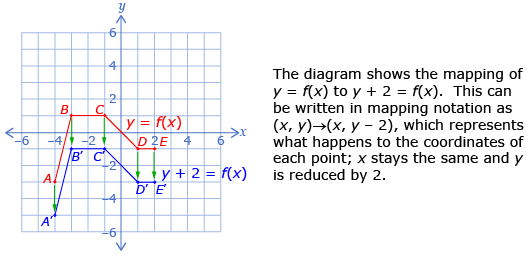In Try This 2 you may have noticed that the graph y = |x| + k is the graph y = |x| translated up k units. Similarly you may have seen that y = |x − h| is the graph of y = |x| translated h units to the right. These results can be generalized to any function f(x).
The graph of y = f(x) + k is the graph of y = f(x) translated up k units and the graph of y = f(x − h) is the graph of y = f(x) translated to the right h units. Often y = f(x) + k is written as y − k = f(x) to emphasize that the k-value causes a change in the y direction.


Be careful determining an h-value for an equation of the form y = |x − h|. In the equation y = |x + 3|, the h-value is negative and the equation can be thought of as y = |x − (−3)|. Similar care must be taken when determining k.
Read part a of “Example 1” and its solution on page 8 of the textbook. You will see that translations can be applied to other functions in a way similar to that seen in Try This 2.
Self-Check 1
Complete questions 1.a., 1.b., 1.c., 2.b., and 2.d. on page 12 of your textbook. Answer
In question 2.d. of Self-Check 1, you probably translated the points A, B, C, D, and E down 2 units each to plot the image. This relationship between pre-image points and image points is called a mapping. Mapping notation can be used to describe what happens to each point.
Read part b of “Example 1” and its solution on pages 8 to 9 to see how mapping notation is used to describe a translation.
Self-Check 2
Complete questions 3.a. and 3.b. on page 13 of the textbook. Answer


